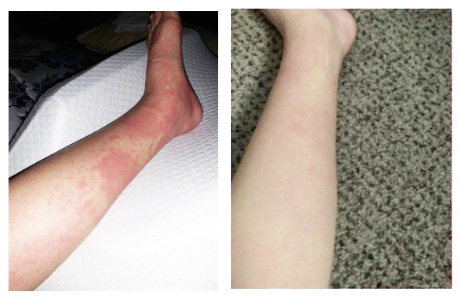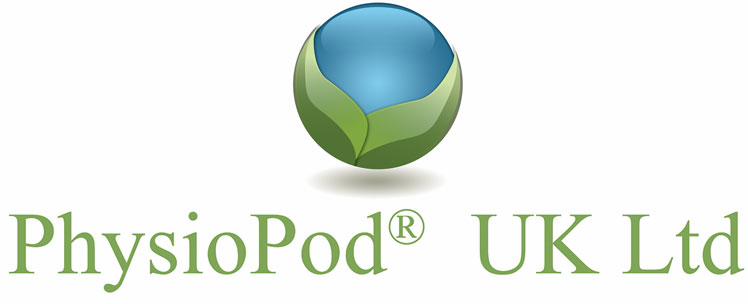Patient Describes Heat Rash Treatment with Deep Oscillation
There is no research specific to the use of Deep Oscillation for heat rash, it is primarily known for its benefits in promoting lymphatic drainage, reducing inflammation, and improving tissue healing. However, Deep Oscillation may potentially help with heat rash by increasing circulation and lymphatic flow, which can aid in the removal of excess sweat and toxins from blocked sweat glands. By reducing inflammation, it may also alleviate the itching and discomfort associated with heat rash. Please read all of the additional PhysioPod information below this patient account. PhysioPod Medical Disclaimer: It's always best to consult with a healthcare professional or dermatologist for a proper diagnosis and guidance on the most suitable treatment options for your specific case of heat rash. Information on this website must not be relied upon as an alternative to medical advice from your doctor or professional health care provider. You should never delay seeking medical advice or discontinue medical advice because of information on this website.
.png)
"Hello Mary!



IT IS VERY IMPORTANT TO NOTE THAT DEEP OSCILLATION CANNOT BE USED IF CELLULITIS IS SUSPECTED. CELLULITIS IS A CONTRAINDICATION TO DEEP OSCILLATION.
WHAT IS HEAT RASH?

Heat rash, also known as prickly heat or miliaria, is a common skin condition that occurs when sweat gets trapped beneath the skin. It often happens in hot and humid weather conditions or when the sweat glands become blocked. Heat rash appears as clusters of small, red, itchy bumps on the skin.
There are different types of heat rash, including:
1. Miliaria crystallina: This is the mildest form and appears as clear, fluid-filled blisters that break easily.
2. Miliaria rubra: This type is more common and results in red bumps and itchy or prickly sensations. It occurs deeper in the skin compared to miliaria crystallina.
3. Miliaria profunda: This is the least common and occurs deeper in the skin. It causes firm, flesh-colored lesions and is often associated with intense sweating.
Heat rash typically affects areas where skin-to-skin contact occurs or where clothing traps sweat, such as the neck, chest, underarms, groin, or back. It can be uncomfortable and itchy, but it is generally not a serious condition and resolves on its own once the skin cools down and sweat is able to evaporate.
The best way to manage heat rash is to keep the affected area cool and dry. This can be achieved by staying in a cool environment, wearing loose-fitting clothing made of breathable fabrics, using fans or air conditioning, and taking cool showers. If discomfort persists or if the rash becomes infected, it is advisable to seek medical advice from a healthcare professional.
Heat rash itself is not typically a direct cause of infection.
However, when the skin is irritated and itchy due to heat rash, there is a chance that scratching can break the skin and create openings for bacteria to enter, leading to a secondary infection. It's important to avoid scratching the affected area to reduce the risk of infection. Keeping the skin clean and dry, wearing loose-fitting clothing, and staying in a cool environment can help prevent heat rash and minimize the chances of infection. If you notice signs of infection such as increased redness, warmth, swelling, or pus, it's best to consult a healthcare professional for proper evaluation and treatment.
WHAT IS CELLULITIS?

Cellulitis is a bacterial skin infection that affects the deeper layers of the skin and the underlying tissue. It usually occurs when bacteria enter the skin through a cut, scrape, insect bite, or other breaks in the skin's protective barrier. Common bacteria associated with cellulitis are Staphylococcus and Streptococcus.
Cellulitis typically presents as an area of redness, warmth, swelling, and pain on the skin that can spread rapidly. The affected area may also appear glossy, feel tender to the touch, and show signs of skin tightness. In some cases, there may be fever, chills, and swollen lymph nodes near the infection site.
Common sites of cellulitis include the lower legs, but it can potentially occur anywhere on the body. It is more common in individuals with compromised immune systems, such as those with diabetes, a weakened immune system, or chronic skin conditions.
Cellulitis requires prompt medical attention as it can lead to serious complications if left untreated. Your healthcare provider will typically diagnose cellulitis based on physical examination and may recommend antibiotics to treat the infection. In some cases, hospitalization may be necessary if the infection is severe or if additional monitoring and intravenous antibiotics are required.
If you suspect you have cellulitis, it is important to seek medical care promptly. Your healthcare provider can provide an accurate diagnosis and recommend appropriate treatment options to help resolve the infection and prevent complications.

For more information on cellulitis please download below:
Guidelines on the Management of Cellulitis in Lymphoedema
SHOULD YOU TREAT HEAT RASH WITH DEEP OSCILLATION?
Deep oscillation therapy is not typically used as a specific treatment for heat rash. Heat rash is a mild and self-limiting condition that usually resolves on its own with simple home remedies:
1. Keep the affected area cool and dry: Avoid hot and humid environments, wear loose and breathable clothing, and use a fan or air conditioning to reduce sweating.
2. Cleanse the area: Gently cleanse the affected area with mild soap and water to keep it clean and prevent further irritation.
3. Use over-the-counter remedies: Apply calamine lotion, hydrocortisone cream, or an antihistamine cream to soothe itchiness and reduce inflammation.
4. Avoid further irritation: Avoid using heavy creams or lotions, and try to minimize friction and rubbing on the affected area.
5. Stay hydrated: Drink plenty of water to maintain hydration, as it can help regulate body temperature and reduce sweating.
If your symptoms worsen, persist, or show signs of infection, it is important to seek medical advice from a healthcare professional or dermatologist. They can provide a proper diagnosis, offer appropriate treatment recommendations, and rule out any other underlying conditions.
PhysioPod asked for the expert opinion of Christine Talbot - Lymphoedema, Bowen and Deep Oscillation Practitioner

In training we were taught never to massage skin rashes of unknown origin in the event of spread or cross infection’, however eczema and psoriasis respond well. Normally a heat rash should be receding within twenty four hours unless infected, but in the case of a Lymphoedema limb normal situations can change. I would assume she took anti histamines and applied cold compresses to alleviate heat and itching. I would treat or even patch treat if there was spread with a cold applicator head from the fridge and progress if no adverse reaction occurred. It is always good to maintain normal circulation with waste and toxin drainage and excretion. DO would speed up and enhance that process
I hope that helps. X"
HOW COULD DEEP OSCILLATION HELP WITH HEAT RASH?
Deep Oscillation is a therapeutic technique that utilizes an electrostatic field to induce mechanical vibrations deep within the tissues. While there is limited research specific to the use of Deep Oscillation for heat rash, it is primarily known for its benefits in promoting lymphatic drainage, reducing inflammation, and improving tissue healing.
Deep Oscillation may potentially help with heat rash by increasing circulation and lymphatic flow, which can aid in the removal of excess sweat and toxins from blocked sweat glands. By reducing inflammation, it may also alleviate the itching and discomfort associated with heat rash.
However, it's important to note that individual responses to treatment can vary, and it's always best to consult with a healthcare professional or dermatologist for a proper diagnosis and guidance on the most suitable treatment options for your specific case of heat rash.
For more information of coping with hot Summers and heatwaves please take a look at the excellent new Lymphoedema Summers page of LWO Community

